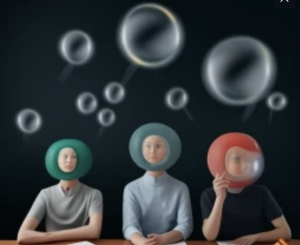So many things bother us—people, mostly. But pretty much everything has the power to upset our basic sense of well-being. Our tendency, when things bother us, is to blame the other person or situation for getting it wrong and thus causing our suffering. Once we have identified what we consider the cause of our disturbance, we usually set out to try and fix it. We attempt to change the other person’s behavior or the situation into something we consider right, or at least something that will not bother us.
There is no doubt that people and situations can be the cause of our discontent. If someone swings a baseball bat into my knee, the pain I feel is directly caused by that action. If a friend speaks unkindly to me, I feel hurt, a direct result of his choice of words. We impact one another; there are people and situations—infinite ones it seems—that can cause our suffering. That said, there is nothing wrong with trying to change a situation that we don’t like or that makes us unhappy. Such efforts are wise and adaptive and a way of taking agency in our lives. We need to try to change what’s not working, if we can. But this is not a post about how to more skillfully change those around us so that they can better fit into how we want them to be. This is about what happens when we are not successful at changing those around us, and cannot change the situation that is causing us pain.
I guess you could call it Plan B.
When we cannot change the cause of our suffering, many of us continue to blame the other person or situation. This may provide us with some relief, at least for a while. But what happens when trying to change the other has failed and continuing to blame is not actually making us feel better either?
Where do we go when we have run out of moves?
Freedom from the whole blaming/fixing cycle, ironically, comes from moving our attention away from the other person/problem that is to blame/fix, and turning that attention onto ourselves. When you hear that it’s time to look into yourself, you may assume (as most people do) that someone is telling you to discover how you are also to blame for the suffering you are experiencing.
This assumption would be false.
I am not suggesting that you are to blame for anything, nor am I suggesting that you search yourself for fault. This step in the process—self-investigation, the step that creates real freedom from suffering—has nothing to do with blame.
To turn your attention into yourself is to ask the question: What does this situation or person’s behavior trigger in me? What pain is generated in me when I am confronted with this behavior or reality?
I was in a relationship with a blamer for years. The problems in his life were always someone or something else’s fault and the dialogue never moved much further than that. For years I tried to change him, encouraging him to be curious and use the situations that caused suffering as opportunities to bring some light to what the real suffering was about. Through the process, sadly, I too became entrenched in blame. I blamed his blaming for my own suffering; if only he weren’t a blamer, I wouldn’t be in pain. But in the end, he didn’t change, I didn’t change, and the situation didn’t change.
And then I started thinking that probably I should take my own advice: Take the focus off the other and get curious about my own experience. Not what I was also doing (wrong) to cause the situation, but rather, what experiences, feelings, memories, beliefs, etc., were his blaming behavior really triggering in ?
What was I experiencing that made the blaming so hard to bear?
What I discovered was simple but profound—and profoundly healing. I found the center of my own truth, what I was really in contact with inside myself in relation to the blaming. Interestingly, naming what I was experiencing and what made the blaming so painful for me did not change my partner’s behavior, nor did it make the experience that arose in me disappear. What it did, however, was ease the excruciating suffering that existed for me in the situation. Rather than the blaming setting off a screeching fire alarm inside me—a code-red emergency—I could witness the blaming behavior, know what it put me in touch with, and stay calm and non-reactive. I didn’t need to change the behavior so that I could get away from some unknowable, but unbearable experience inside myself. I could say to myself (with kindness), “Oh right, this blaming triggers this such and such in me, which has a history of its own and is understandable. That’s what’s here now.” And then, oddly, the whole thing is kind of done. The experience that was so threatening, and the cause of so much pain, is deactivated. Its wires are cut. The emergency of making the situation or behavior stop eases when the inarguable truth of what is happening inside us is clear. The suffering doesn’t need much more than that.
As we all know, we can’t control anyone else’s behavior, and we can’t make another person want to or be able to change. But we can always make the choice to shift our attention inward, to focus the lens of curiosity onto ourselves. And remember, by investigating our own experience, we are not condoning the behavior that triggers our suffering, nor are we assuming responsibility for having caused it. Getting curious about what is happening inside us in a particular situation, naming it, understanding it, unpacking its history, and bringing compassion to it—this the surest path to freeing oneself from the cycle of blame and the need to change what we don’t like. Ultimately, self-awareness is the most powerful and profound antidote to suffering.


